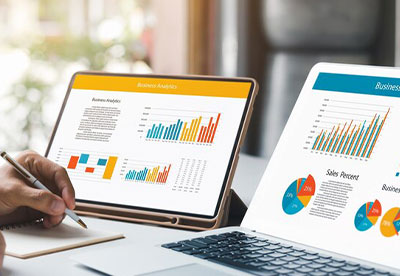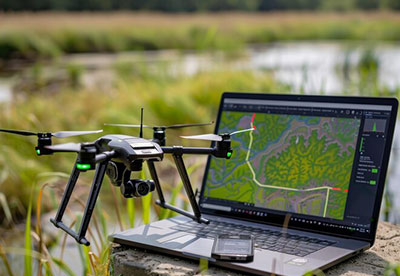Business Intelligence VS Data Analytics
Hey there! Are you fascinated by the world of data and technology and the impact they have on decision-making in organizations? Then you’re in the right place! Today, we’re going to dive into the exciting world of Business Intelligence and the crucial role of Data Analysts.
What is Business Intelligence?
Business Intelligence is a set of strategies, techniques, and technologies that organizations use to turn data into actionable insights. It involves collecting data from various sources, cleaning and organizing it, analyzing it, and presenting it in an easily digestible way for decision-makers. By providing valuable insights into data, BI helps organizations make informed decisions, improve efficiency, and drive business growth.
Business Intelligence: How It Works
Are you tired of making crucial business decisions based on guesswork and gut feelings? If so, you’re not alone. That’s where business intelligence comes in to save the day.
Business intelligence is all about transforming raw data into valuable insights that drive informed decision-making. It does this by collecting information from a variety of data sources, including supply chain data, marketing analytics, and sales dashboards, and bringing it all together under a single platform.
Here’s a step-by-step look at how business intelligence works:
- Data Collection: The first step in business intelligence is to gather raw data from available databases. This could be anything from financial data to customer data.
- Data Analysis: The next step is to sort and analyze the data to make sense of it. It is where the real magic happens, as you start to uncover patterns and insights that would otherwise be hidden.
- Visualization: To make the data easier to understand, it’s turned into visually appealing forms such as graphs, charts, and dashboards.
- Decision Making: With the data analyzed and visualized, it’s time to share the results with your team. By presenting the information in an easy-to-understand format, everyone can work together to make informed decisions.
- Performance Tracking: Finally, it’s important to keep track of how your decisions are impacting your business. By comparing and contrasting performance, you can see the impact of your data-driven decisions and make improvements accordingly.
What is Data Analytics?
On the other hand, data analytics is the process of examining and transforming data to extract meaningful insights and draw conclusions. It involves using tools like spreadsheets, databases, and statistical software to analyze data and find patterns and trends. Data Analytics plays a crucial role in Business Intelligence, as it is the process that turns data into valuable insights.
Data Analytics, ever wondered how it works?
Unleashing the Power of Data: An Exciting Journey through Data Mining
Imagine being able to dig into vast amounts of data and uncover hidden patterns and trends that hold the key to making informed decisions. That’s exactly what data mining is all about! Some experts even call it “text analysis,” which involves sifting through massive amounts of information to find meaningful insights.
Discovering the Past: Descriptive Analysis
But it’s not just about the future. Data mining also helps us make sense of the past. For example, descriptive analysis is a tool that provides a clear picture of what has happened. This type of analysis answers the crucial question, “What happened?” and gives us an understanding of past performance.
Solving Mysteries: Diagnostic Analysis
But what about when something goes wrong? That’s where diagnostic analysis comes in! This type of analysis delves deep into a system to uncover the root cause of a problem. It helps us understand why things aren’t working as they should and provides a roadmap for solving it.
Peeking into the Future: Prediction Analysis
And finally, prediction analysis takes us on a journey into the future. This exciting field of data mining answers questions about what may happen. It uses historical trends and machine learning techniques such as decision trees, neural networks, and regression to make predictions. So, prediction analysis is a powerful tool for making informed decisions, whether it’s predicting future sales, identifying potential risks, or understanding customer behavior.
How Data Analysis Helps to Track Business Growth?
Business Intelligence and Data Analytics
Some of the key differences between BI and Data Analytics are as follows:
Operation vs Innovation: A Tale of Two Concepts
Do you know the key difference between Business Intelligence and Data Analytics? It’s all about the focus. In contrast, Business Intelligence focuses on operations, and Data Analytics zeros in on innovation.
Think of Business Intelligence as the historian of your business, collecting raw data and evaluating its past growth. It’s all about keeping the operations running smoothly. But when it comes to adding a touch of innovation, Business Intelligence may fall short.
That’s where Data Analytics comes in. It takes raw data and turns it into a tool for predicting future trends and patterns. As a result, it empowers business leaders to make innovative decisions and take their operations to the next level.
Business Intelligence may struggle to find the patterns in raw data, but Data Analytics rises to the challenge. It gives businesses a competitive edge by providing a platform for innovative thinking and action.
In conclusion, these two concepts are distinct but equally important. While Business Intelligence focuses on keeping the wheels turning, Data Analytics provides the spark to ignite growth and progress.
Tools and Techniques
Business Intelligence (BI) and Data Analytics (DA) might seem similar, but they differ in their approach to handling data. While BI focuses on turning collected data into actionable insights that inform decision-making, DA takes a critical approach by scrutinizing these decisions and identifying areas that are prone to risk.
To bring this difference to life, each approach has a unique set of tools and techniques. For example, BI relies on tools that gather data, create dashboards, and generate reports. On the other hand, DA utilizes cutting-edge technology to analyze data and uncover meaningful patterns.
Past vs Future
One distinction between Business Intelligence and Data Analytics is their focus. Business Intelligence is primarily concerned with past business performance, analyzing historical data to gain insights. Meanwhile, Data Analytics focuses on predicting future trends and patterns.
As a result, Business Intelligence is often considered less risky than Data Analytics, which involves taking calculated risks to drive innovation and growth. Instead, business Intelligence serves as the foundation for Data Analytics, providing the historical data that informs future decisions.
Overall, Business Intelligence provides a retrospective view of a business, while Data Analytics looks forward, utilizing data and advanced techniques to drive innovation and growth.
Conclusion
The success of Business Intelligence and Data Analysis is heavily reliant on data. While Business Intelligence examines past events to inform future decisions, Data Analysis employs algorithms to scrutinize data sets. Utilizing both techniques in your business strategy can lead to data-driven, informed decisions, and improved outcomes.
Start by using Data Analysis to process, clean, and analyze data sets, then employ Business Intelligence to make informed decisions based on the analyzed data and previous experiences.
The Future of Data Analytics
5 mins read

















